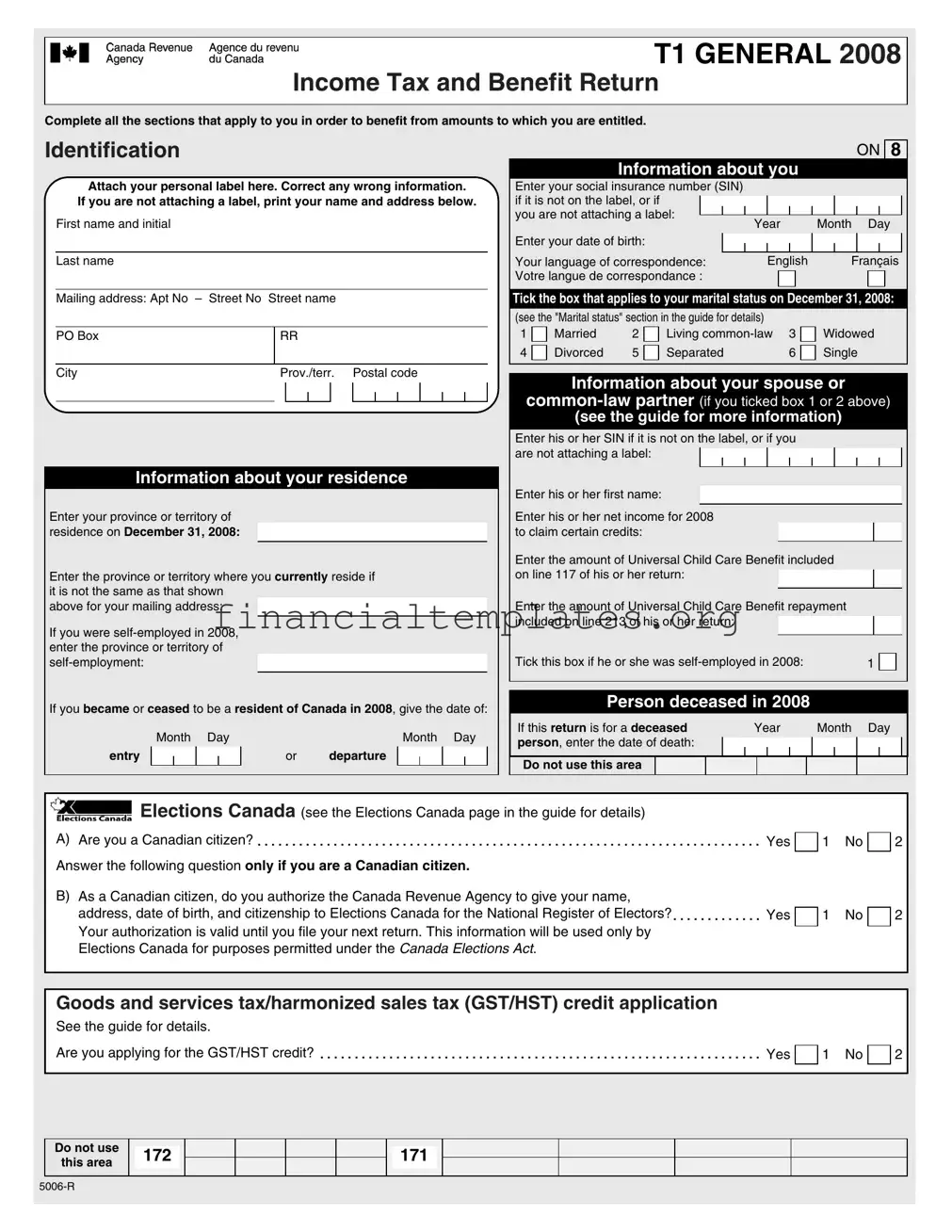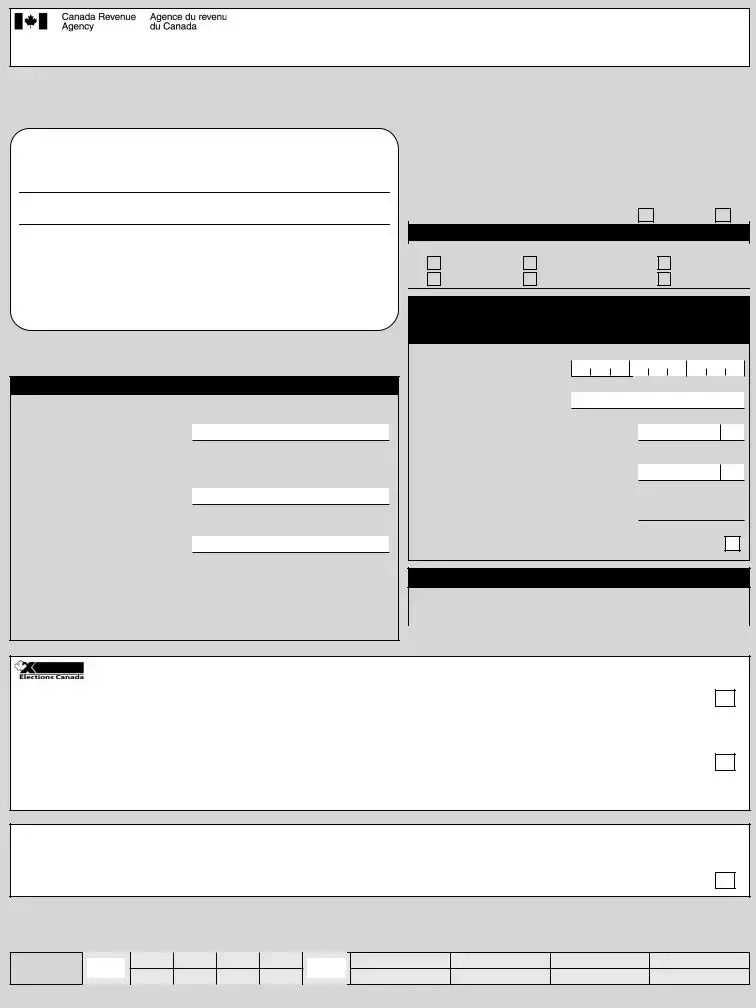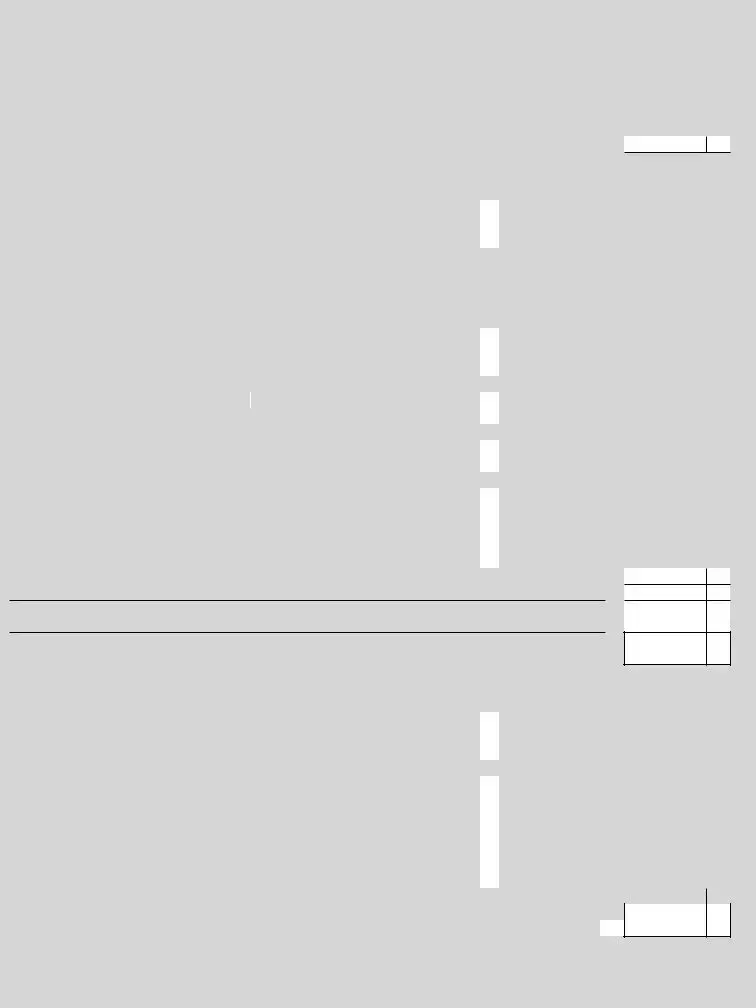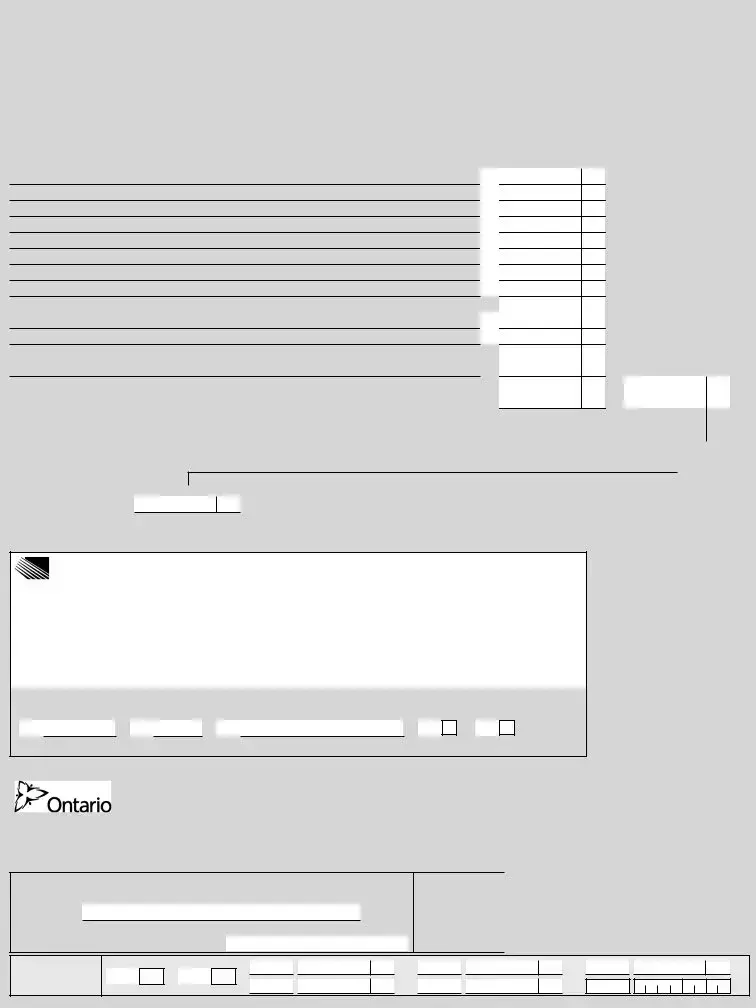The Form 1040, used in the United States for filing individual federal income tax returns, shares key similarities with Canada's T1 General Income Tax and Benefit Return form. Both documents are crucial for individuals to report their annual income, claim allowances, deductions, and tax credits, and determine their tax liability or refund for the year. Taxpayers in both countries must provide personal information, income details from various sources, deductions, and credits to accurately calculate their taxes due or refunds owed. Moreover, they may need to attach additional schedules or forms to support their income and deductions claims.
State or Provincial Tax Returns, such as the New Jersey State Tax Return in the U.S. or the Ontario Provincial Tax Return in Canada, resemble the T1 General form regarding their function for regional tax reporting. They require individuals to report income earned within the particular state or province and calculate applicable taxes or refunds based on the region’s tax laws. These forms typically request similar information found on the federal returns, including income from wages, investments, and other sources, while also allowing for region-specific deductions and credits.
Schedule C (Form 1040), Profit or Loss from Business, parallels the self-employment income section of the T1 General form. Both documents are designed for individuals to report income or loss from a business they operate or a profession they practice as sole proprietors. Taxpayers use these forms to detail their business's revenue, expenses, and net profit (or loss), which then contributes to their overall tax calculations on their general income tax return.
The W-2 form in the United States and the T4 slip in Canada serve similar purposes for employees, although they are not directly completed by taxpayers themselves. Employers issue these documents to report an employee's annual wages and the amount of taxes withheld from their paychecks. Taxpayers then use this information to fill out their respective income tax returns (1040 form in the U.S. and T1 General in Canada), ensuring the income and tax withholdings are accurately reported.
Form 1099-DIV, Dividends and Distributions, in the U.S. and the T5 slip in Canada are issued to taxpayers who receive dividends or other distributions from investments. These forms provide details on the amount of dividends taxpayers earned, distinguishing between eligible, non-eligible dividends, and other distributions, which is essential information for filling out the income tax and benefit return forms in both countries. This information helps individuals accurately report investment income and calculate the tax owed.
Schedule A (Form 1040), Itemized Deductions, in the United States compares to the deductions sections of the T1 General form in Canada. These sections of the tax forms allow taxpayers to list and subtract allowable deductions from their gross income to arrive at their taxable income. Deductions can include medical and dental expenses, taxes paid, interest paid, gifts to charity, and losses from theft or disaster, among others. The principle behind both is to reduce the amount of income subject to tax by recognizing certain allowable expenses incurred throughout the year.
The Child Tax Credit forms, used in both countries, also share similarities with the family tax benefits sections on the T1 General form. In the U.S., Form 1040 allows taxpayers to claim the Child Tax Credit, while in Canada, taxpayers can apply for the Canada Child Benefit (CCB) through the T1 General. These provisions aim to help families by reducing their tax liability based on the number of dependent children, thereby providing financial relief and acknowledging the cost of raising children.






